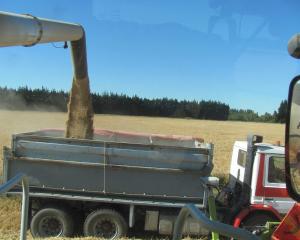Landowners considering planting trees need to question whether the benefits to their overall farming business are greater with the land in trees or in its existing use, RaboResearch sustainability analyst Blake Holgate says.
Government policy changes in forestry and climate change would make forestry a more appealing land-use option for some landowners. However, they should carefully consider a range of financial, strategic and environmental issues to ensure they made informed decisions, a new report by Rabobank said.
Mr Holgate, the report's author, said there was ``no one-size-fits-all'' approach when deciding whether to plant trees.
It was important landowners gathered the appropriate information and sought expert advice to ensure the long-term implications of planting were well understood and any planting was done in the right place, with the right species for the right purpose.
New planting incentives from the Government included funding under the One Billion Trees programme, along with changes to how forestry earned and repaid carbon credits under the Emissions Trading Scheme, which had lowered establishment costs and provided greater clarity for landowners considering entering the carbon market.
Since the inclusion of forestry within the ETS in 2008, landowners had the opportunity to generate revenue from the carbon sequestered by trees planted after December 31, 1989.
Weak carbon-price signals and ongoing climate-change policy uncertainty meant landowners had generally been reluctant to register existing forest land or plant new land in forestry. However, new government initiatives were likely to encourage new planting, the report said.
For some landowners, it might be a chance to get an economic return from large areas of previously non-productive land.
However, for the majority of landowners, recent policy developments would provide them with an opportunity to identify and capitalise on planting incentives by planting trees that would integrate with, and add value to, their farming system.
The opportunities that forestry represented for individual landowners would vary widely. For those operating high-value land uses such as dairying, there might be very little, or no, net benefit to planting trees on their property.
There would be other landowners with operations that spanned a range of land classes, possibly including a small percentage of land that was relatively non-productive, where trees could be planted without a meaningful impact on the farm system.
For other landowners, forestry would provide an opportunity to generate income from large areas of land that had previous effectively generated very little economic benefit.
Another income available to landowners after planting trees was from producing and selling manuka honey.
Manuka honey was sold at a premium to most other types of honey. Its production had grown steadily, hive numbers increasing at 10% per year since 2007, and it accounted for the majority of New Zealand's $350 million of honey exports.
Under the Government's direct landowner grant, landowners were entitled to $1800/ha planted for manuka plantations of 5ha-300ha.
While specific conditions and knowledge were required to produce manuka honey, that grant provided a strong incentive for those with suitable land to investigate its potential, the report said.















